A couple of weeks ago, I picked up a Canon EOS 7D Mark II, and last week used it to shoot three days with the adorable Snow Monkeys in Nagano, four hours north-west of Tokyo, and I’m now in a position to talk about my first impressions. I’ll follow up with a more detailed review later, but here are my initial thoughts on this new camera.
1.6X Crop Factor
Before we jump in and look at some photographs, let’s talk a little about the camera itself. Probably one of the most important aspects for many is that the Canon EOS 7D Mark II is a crop factor camera. I have been shooting with full frame bodies since the first generation 5D and 1Ds, and although my old 1D Mark IV that I used for wildlife had a 1.3X crop factor, since the release of the Canon EOS 1D X I have been shooting exclusively with full frame cameras.
The 7D Mark II has a 1.6X crop factor, which means that if you are shooting at a 100mm focal length, the camera actually captures an image that is the equivalent of a 160mm focal length. Now, for wide angle shots this is obviously an unwelcome limitation, but my main use for this camera is going to be wildlife, and similarly for sports photographers too, getting a little bit more reach out of our telephoto lenses is generally a good thing.
100% Viewfinder
I’ll try to go into more detail on all the new stuff when I have more images to share and more experience with the 7D Mark II, but for now, here are a few other things that I am very happy to see in this new body. Firstly, I was very pleasantly surprised to see that the viewfinder on the 7D Mark II is approximately 100%. The original 7D also has a 100% viewfinder, although I never used the 7D. My old crop factor cameras had very dark viewfinders though, which I never really liked. You don’t necessarily notice this if it’s all you shoot with, but once you start shooting with a 100% viewfinder the narrower field of view models seem dark and difficult to really see well.
Intelligent Viewfinder II
I also really like some of the new features in the Intelligent Viewfinder II, such as the ability to turn on a permanent digital level that displays whenever you half-press the shutter button. On my other bodies, I have to map the M-fn button to display this level whenever I press it, and I was stumped initially that I could not map this button in the custom functions of the 7D Mark II, but then I found how to turn this on in the viewfinder, and love that it’s there all the time now as I shoot.
Here’s a screenshot from the User’s Manual to show you what I mean. The digital level is at the top of the frame, above the focusing points, which means that you can now simply glance at that whenever you need to ensure you have the camera level, rather than pressing a button to display this information using the focus points, as is the case for the 5D Mark III and 1D X that I also use.
You can also now display various camera settings to be displayed in the Intelligent Viewfinder, such as your auto-focus mode, which I love being able to do. I switch between One Shot and AI Servo quite a lot, and being able to see that right there in the viewfinder is very useful. I’ve also turned on displaying my image quality in the viewfinder as well. I only ever shoot raw, but I have found myself in JPEG through reasons I can never understand in the past, and have had to reshoot images in raw, so I just like to be able to see this in the viewfinder as a double-check.
65 Focus Points!
Of course, the other major change and probably the reason that I decided to buy the 7D Mark II is that it has an almighty 65 Focus Points, all cross-type! The 5D Mark III and 1D X have a very respectable 61 focus points, but even the 1D X with it’s incredible auto-focussing only has 41 cross-type sensors. Now, does this mean that the 7D Mark II has better autofocus, well, unfortunately it doesn’t really, as we’ll see.
10 Frames Per Second!
Another feature that sports and wildlife shooters are always interested in, is the number of frames per second, and the 7D Mark II shoots a very respectable 10 frames per second. This is the same as the 1D Mark IV, which was the top of the line sports camera from Canon before the 1D X, and even the 1D X only beats that by 2 frames per second in raw mode, so again, 10 fps for a $1,800 camera is just crazy-talk. Amazing! As an aside, the shutter sound of the 7D Mark II is pretty sweet too. Not very loud, but a nice solid sound that’s very easy on the ears. [Listen to the audio to actually hear the shutter sound I recorded.]
GPS Built-in
I also really like how GPS is now built in, which saves me from having to use my GP-E2 which I’m still using on my 5D Mark III and 1D X to geotag my images. In the 7D Mark II settings you can set the camera to either just tag images, or create a track-log and tag the images at the same time. One thing that I don’t like is that the camera continues to record coordinates even after you turn it off. This means that you have to go into the menus to disable GPS when you no longer need the track-log to be created. In my opinion this should turn off when you turn off the camera, or at least have an option for it to be turned off with the camera, which would save going into the menus each time.
“Enhanced” Weatherproofing
At first, I thought this might be a bit of clever marketing blurb, as it was with the 5D Mark III, but Canon claim that the 7D Mark II has “enhanced dust and weather resistance”, and go on to state in the camera specifications that the camera’s seals are built to resist water and dust, which in addition to the rigid magnesium alloy body make the 7D Mark II “ready for almost anything”.
Now, I’m still not going to take this at face value until I’ve really given the weather proofing a good hammering, but we had a fair amount of rain on one afternoon with the snow monkeys, and it snowed for most of the rest of the time, and the camera held up fine so far, without any kind of protection. Now of course, snow isn’t wet until it melts, so that’s not such a great test, but the rain didn’t bother it at all, in the few hours that I got mine wet. More to come on this later as I really put the camera through it’s paces.
Built-in Intervalometer and Bulb Timer
I also want to give an honourable mention to the built-in intervalometer and bulb timer, which has been a long time coming, and I love this, but, it’s totally wasted for me on this camera, because I will almost certainly never use this feature on my wildlife camera. This is something that I would have loved in the 5D Mark III, and will be happy to hopefully see in a future full-frame camera, which is what I’ll use for my landscape work.
Field Test
OK, so they’re the main features that I am impressed with, and that lead me to pick up my own 7D Mark II, but how did it handle in the field?
As I said, I used the 7D Mark II for three full days shooting the Snow Monkeys with some private tour customers that I took over to Jigokudani for four days last week. I shot all of the images that we’ll look at today with the Canon EF 70-200mm f/2.8L II lens without an Extender fitted. I’ll update you on these findings after I’ve taken this camera to Hokkaido with me to photograph the red-crowned cranes, whooper swans and sea eagles for a total of almost four week in January and February, but my initial impressions based on photographing the snow monkeys are as follows…
Slight Start-up Lag
First of all, if you want the ultimate sports and wildlife camera, the 1D X is still it, for a number of very subtle reasons, but when you consider that the 7D Mark II is almost a quarter of the price, the reasons could become pretty insignificant. One of the reasons is that there is a very slight lag when you first raise the camera to your eye to capture something in a hurry.
A number of times I’d see a snow monkey doing something that I wanted to capture in an instant, but the camera takes just a split second or maybe even half a second or so to respond as you try to focus initially. Now, this could be down to the Intelligent Tracking and Recognition, or iTR Autofocus which the manual says can slow down focusing a little. I prefer to leave iTR AF turned on though, because it uses subject colour information to continue to focus on the subject, which is pretty important when tracking a subject around the frame.
It’s also very possible, if not likely, that the lag that I saw was due to the cold weather, which slows down the liquid crystal action that is used to display the in-screen information, giving the impression that the camera itself is slow. The temperature was between 1 degrees Celsius to around minus 8 during our time with the snow monkeys, which is certainly cold enough to start seeing this behaviour.
So, is this slight lag a big problem? Not really. I can totally live with it, especially when you consider the cost of this camera compared to the 1D X. We aren’t really comparing apples to apples by expecting it to be quite as snappy. I’ll let you know how the camera fairs in really cold conditions once I’ve used it in Hokkaido, but I don’t think this is going to be a big issue. Plus, Canon only actually support the camera down to freezing point, which is ridiculous when you consider how these cameras are used, but that’s their decision to make I guess.
AI Servo Performance
The other thing that wildlife and sports shooters are going to be interested in hearing about, is the AI Servo focusing performance. Once again, so far this doesn’t seem as accurate as the 1D X. Let’s look at a series of 30 frames of a snow monkey coming straight towards the camera. This burst was literally three seconds long, so I didn’t stop shooting at all between these thirty frames.
The very first frame was totally sharp, so the camera had no problem locking on to the face of the snow monkey quickly as I raised the camera. Note that in the settings I have the camera setup to give priority to focus for the 1st AI Servo image, so this is as expected. I also have the AI Servo 2nd image priority set to Focus rather than Speed, so I was expecting the following frames to be perhaps more consistently sharper, but that wasn’t the case. The camera kept sharp focus until frame 5 when it ran off a little for a total of 5 frames, before locking back in on the face in frame 10, the last image on the top row.
[UPDATE] I’m adding the above and below 100% crop of the first and the tenth frame of this series in reply to a comment. This first frame was the sharpest of the first 10 frames, with the rest varying slightly between that and the following tenth frame image.
After that, frames 11 through to 17 were also slightly soft, with the focus just slightly behind the face. Frame 18 was sharp again, and then the focus ran off very slightly again for five frames, getting gradually worse, until the focus almost locked back in again on frame 24 and it got really sharp again by frame 26. Unfortunately by that time the snow monkeys foot was starting to leave the bottom of the frame. The last two frames were totally soft, as the monkey dropped out of the frame.
I’m checking sharpness at 100% as I always do, because I want maximum sharpness, and honestly, I think the performance was under par, and I found this to be continuously the case for around eight similar bursts. The sharpness comes in for some frames, but then runs out again, and you just don’t see that level of failure with the 1D X with the same tracking and sensitivity settings.
Don’t get me wrong, if you aren’t worried about critical sharpness, many of these frames are usable, but they aren’t totally sharp. Here’s a 100% crop from frame 18, which is probably the sharpest of the series, so that you can see how sharp it got. I’d use this at a push, although I’m not totally happy with it. The settings for this series by the way was 1/800 of a second, at f/8, ISO 640.
Here too (below) are frames 19, 20 and 21, which gradually run more and more out of focus, from left to right. Don’t forget to click on the image to enlarge it to see the detail, or lack of detail in this case. This example is about 66% of the original, so it’s downsized very slightly to enable me to show you all three images together. Frame 19 is just about usable at a push, but frames 20 and 21 are unusable really. Now, in a burst like this, I’m happy if I have some usable frames, so this is not necessarily a bad result, but it’s not as good as I’d expected either.
So, these results are probably not what many of you were hoping to see and hear about, but this is the reality. Do bear in mind that even when using the 1D X we aren’t necessarily going to nail every frame, but the hit ratio is usually a bit higher than this in similar conditions. As I say though, this was from just over a handful of bursts, and I’ll be giving the 7D Mark II another good test in January and February on my Winter Tours & Workshops, and I will be sure to report my findings in March when I get back.
My auto-focus settings here were by the way were Tracking Sensitivity at zero, so equal priority for Locked on and Responsiveness. Acceleration/deceleration Tracking was set to 1, which should help to track a subject moving at various speeds, and AF point auto switching was set to zero, as I usually prefer the auto-focus to stick with my subject rather than easily moving to surrounding objects.
ISO Performance
OK, so before we finish for this first impressions review, let’s take a quick look at the ISO performance. I shot between ISO 640 and 1600 over the three days, and was pretty impressed with the ISO performance to say that there are 20.2 megapixels on the 7D Mark II’s APS-C sensor. I’ll need to do some straight comparisons to really compare the 7D Mark II and the 5D Mark III and 1D X, but from what I’ve seen, up to ISO 1600, the 7D is seems to be pretty much on a par with the 5D Mark III. Here is a 100% crop from an image shot at ISO 1600, 1/125 of a second at f/8.
Click on the image to view at full size, as the above image is resized for the blog post, but you can see in the full sized image that there is a little bit of visible grain creeping in, but it’s very organic, and nothing that I’ll worry about when I have to start to increase my ISO in low light. I’ll do some direct comparison’s later, but for now, all I can say is that I’m pretty happy with the ISO performance of the 7D Mark II.
Here too is the image that I cropped this last example from, just in case you were wondering what this little guy looks like in context.
And here to finish with is another shot of a little monkey, just because. You’ve gotta love these little guys. This was shot at ISO 800, 1/400 of a second at f/5.6.
Current Conclusion
So, after that you’re probably wondering how happy I am with the 7D Mark II. Well, at this point in time, despite the new 65 cross-type focus points, I’m happy enough, but not overly impressed with the auto-focus. I’ll know more about this soon, but for now, it’s good, but not amazing. ISO performance is good, especially considering the 20.2 megapixel resolution, and there are a bunch of other features that I mentioned that are very welcome too.
All-in-all, it’s a big thumbs up, and when you consider that I’m basing most of my comparisons with the Canon EOS 1D X which is almost four times the price, you really can’t go wrong with the 7D Mark II. As a cheaper alternative to the top of the line, you’ll get what you pay for, and much, much more.
100-400mm Mark II Review Coming Up!
I have actually just also picked up the new 100-400mm Mark II lens released on Dec 19 (2014) the day after this visit to the Snow Monkeys. I will be taking the 100-400mm on the road in January and February, and will be reporting my findings on that in March too, along with the 7D Mark II update. If you don’t usually follow my blog, do bookmark it, subscribe to the RSS feed or subscribe to the Podcast in iTunes etc. so that you don’t miss these upcoming reviews along with all the other photography goodness that I publish.
Show Notes
Canon EOS 7D Mark II on B&H: https://mbp.ac/7d2
Canon EF 70-200mm f/2.8L IS II USM Lens: https://mbp.ac/70-200ii
Canon EF 100-400mm f/4.5-5.6L IS II USM Lens: https://mbp.ac/100-400ii
Subscribe in iTunes for Enhanced Podcasts delivered automatically to your computer.
Download this Podcast in MP3 format (Audio Only).
Download this Podcast in Enhanced Podcast M4A format. This requires Apple iTunes or Quicktime to view/listen.

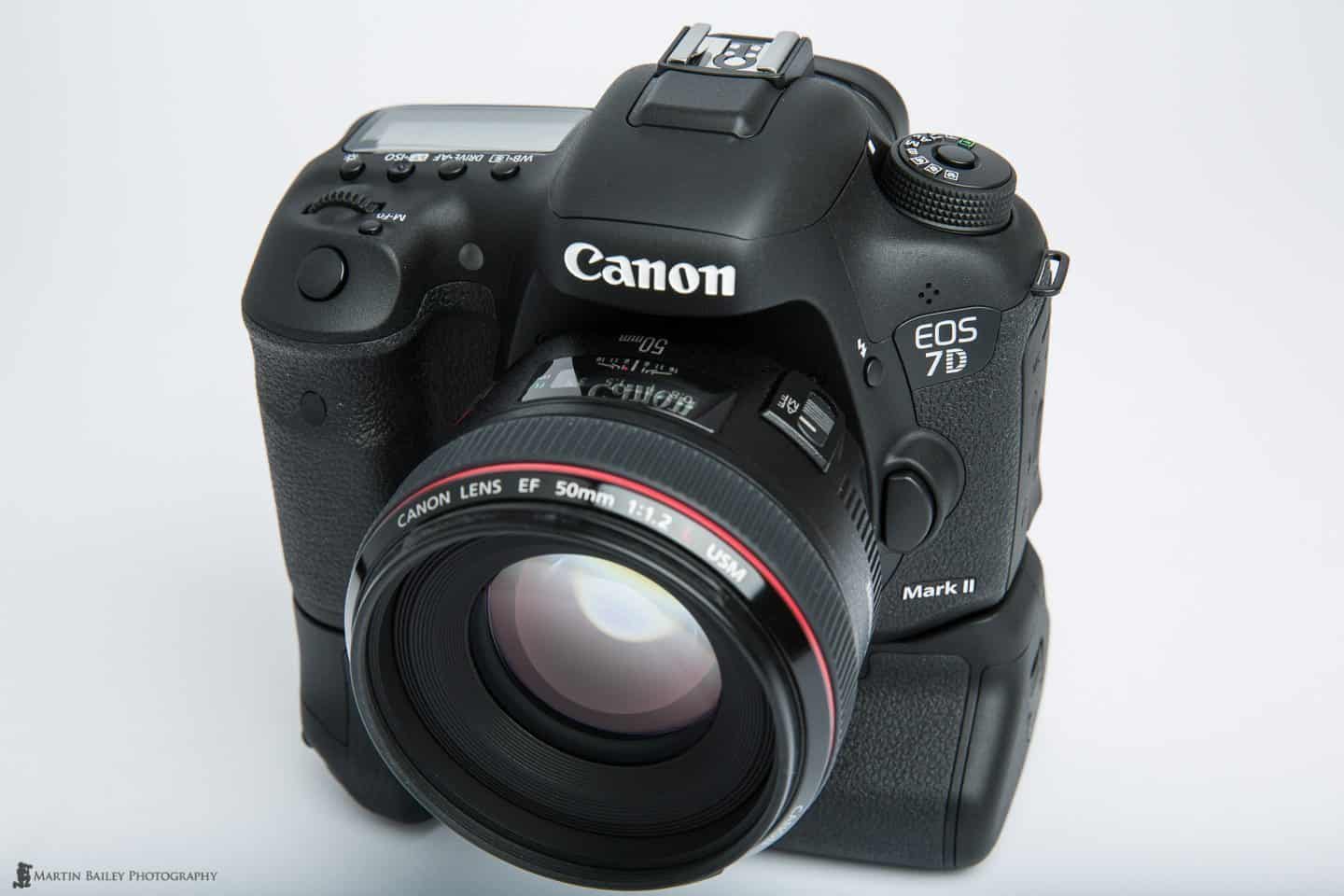
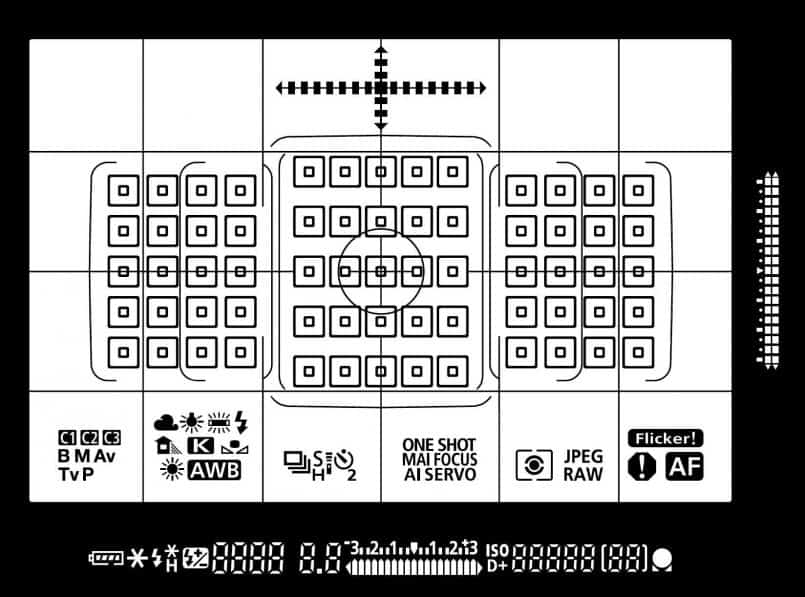

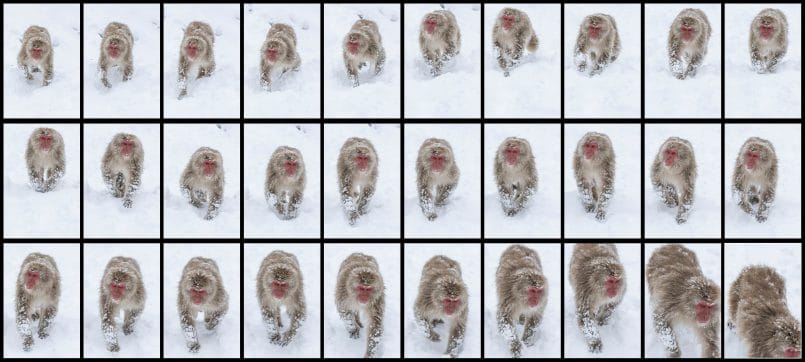
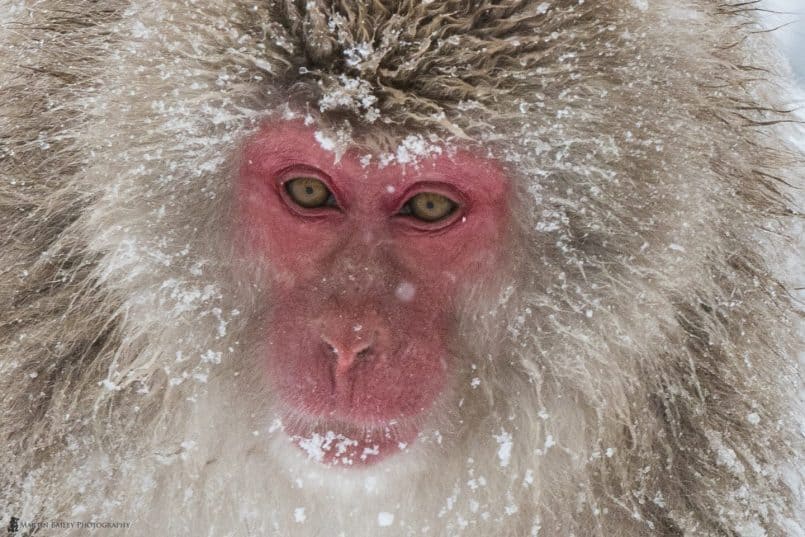
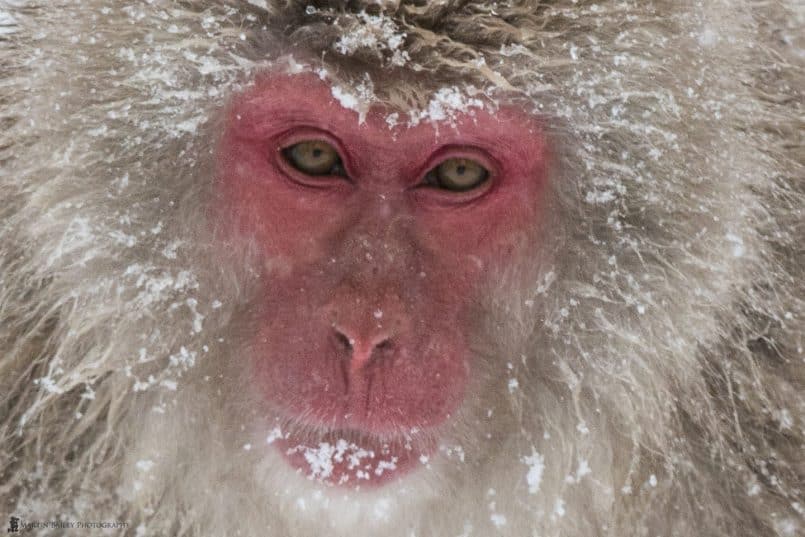
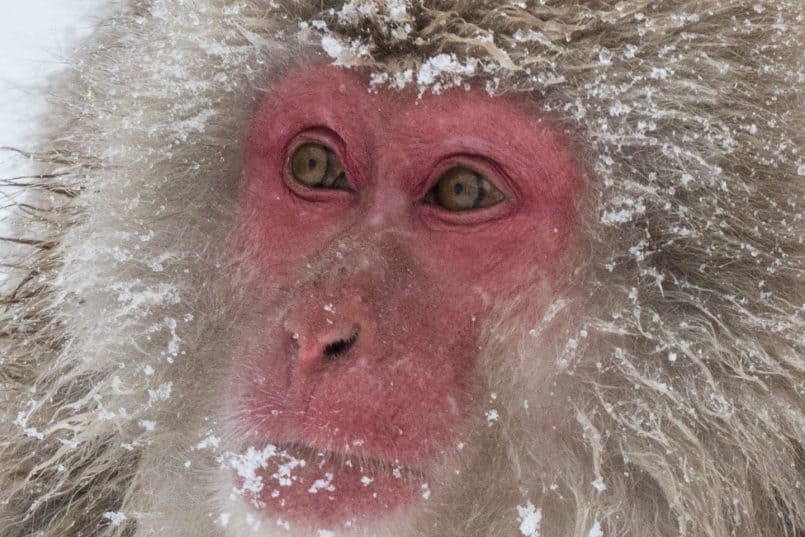
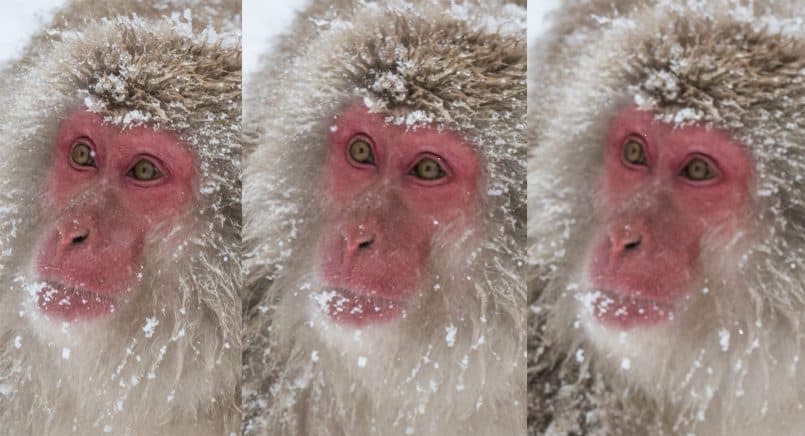
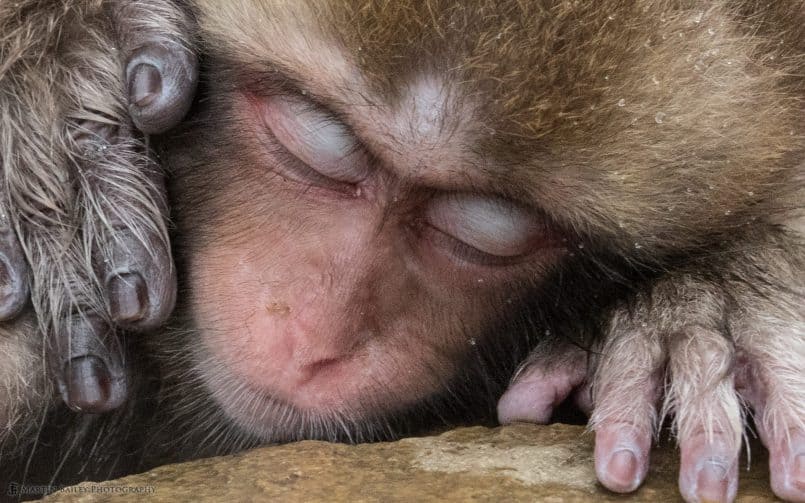
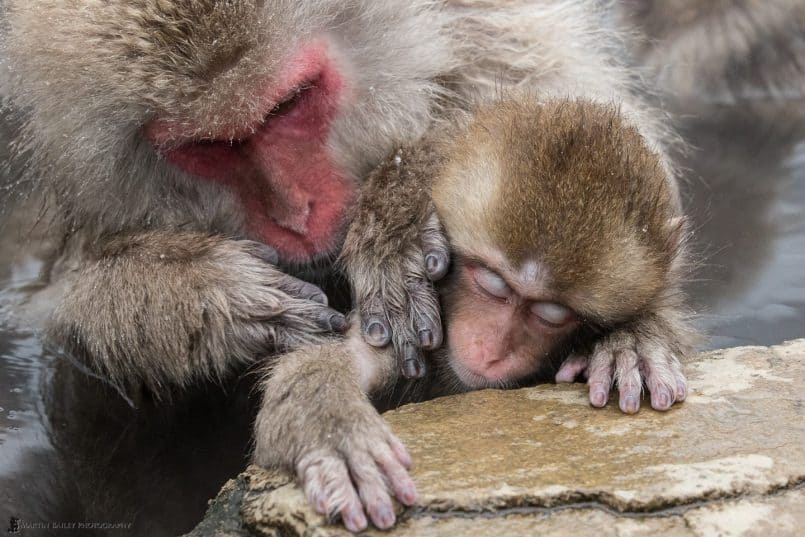
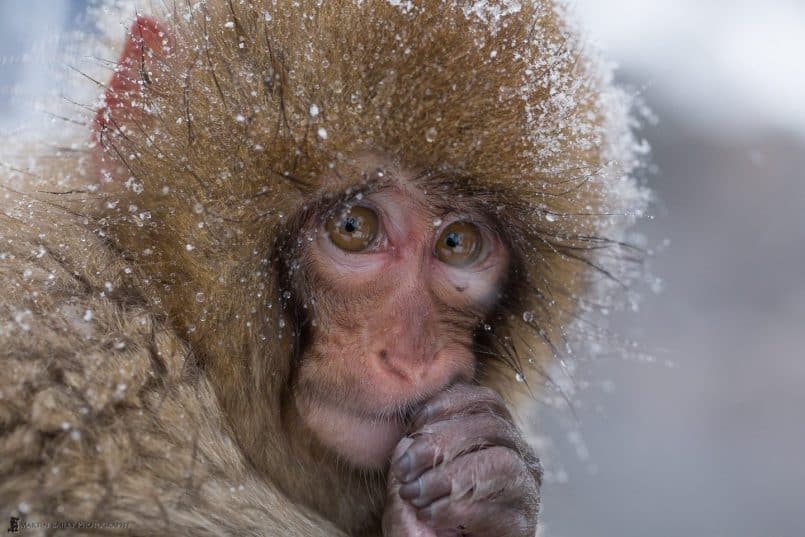

Martin – thanks for this .. a couple of questions
– 1/800th second … is that what you would expect to achieve sharpness and not a little higher? You don’t say what your were at in terms of focal length. I’m going to assume you were zooming out as the monkey got closer?
– when you are shooting bursts how can you tell it’s the camera vs. user? I still look at some of the 1DX stuff I shoot I shoot and wonder is it me or the camera (I should start to keep an eye on hit rate at 100% crop)
– you were shooting at f/8 and say the focus locked on just behind the face … again how can you tell this wasn’t a slight of hand (user vs. camera)
Great stuff as always and very interested in further experience as you get proper usage out of it … I’m seriously consider the 7D (replacing the MK IV) to give me the extra reach on my 400mm … (rather than using an extender or dropping $12k on a new lens) ..
cheers, and hope you and yours have a very happy festive season ..
Nigel
Hi Nigel,
Yes, 1/800 of a second is enough to get sharp shots of a walking monkey, and yes, I was zooming out as the monkey approached. I started at 165mm and zoomed out to 120mm by the final frame.
As for the user or the camera, if you know that you did everything right, including keeping your finger on the AF button, and keeping the subject within the focus points, there’s not a lot else that you can do, so the camera is probably going to be the culprit. Of course, other things like available light and your holding technique are going to come into play, but when you’ve been doing this a long time, and are pretty confident of your technique, and generally get much better results, it’s safe to assume that it’s the camera, not the user.
Same goes for your third bullet point. Note that it didn’t ‘stay’ locked on just behind the face. Some of the frames were in focus. It’s definitely an issue with the autofocus not doing it’s job as well as one would hope. Keep in mind that I’m used to seeing much higher hit rate, and nothing has changed with my technique. The only thing that has changed is the camera. 🙂
I’m honestly not sure that you’d get any better results with the 7D Mark II over your 1D Mark IV. I would rent a 7D2 for a while first, and see how you get on with it. It’s a great camera for the price, but if you already have a 1D4, that’s a tough decision.
Thanks for stopping by, and a Merry Christmas and a Happy New Year to you too!
Martin.
Thanks for your review. It is quite consistent with my findings, specifically with the AF AI Servo. It does not consistently track as well as even my old 7D when testing using a 200-400 f/4 lens.
You’re welcome Rick. Thanks for the info on your 7D2 experiences too. It’s interesting that it doesn’t improve on the 7D either. I would have expected that to be the case, although I never shot with a 7D, so this is good information.
I’m not sure someone has reviewed the Canon tutorials with regard to focusing and the new algorithms used for focusing. (http://learn.usa.canon.com/resources/articles/2014/eos7dmkii_zoneaf_afpt.shtml). The new wide zone focus system allowed me to track BIF much better than my 5D MkIII was ever capable of doing. My hit rate was truly amazing with the new to Canon setting. BTW, I use setting 2 for tracking when tracking eagles.\. I haven’t tried the face recognition.
Hi Buddy,
I have always used 65-point Automatic selection and used a selected focus point to get initial focus, and I’ve never had issues with birds in flight, so I’ve never tried zone focusing. I am actually expecting the 7D Mark II to be amazing with birds in flight with 65-point Automatic selection, but if it’s less than I expect, I’ll give zone focusing a try. I generally use the 1D X for birds in flight though. I tried the 5D Mark III with the 200-400mm last year, and couldn’t stand it for more than a day. It’s nowhere near as accurate as the 1D X. I’m pretty sure the 7D2 is going to beat the 5D3. For me now it’s really about how close it can get to the 1D X, or if it can even surpass it! 🙂
Note too that I’m not thinking face recognition when I mention iTR. I’m more interested in color recognition, which helps the camera to track the subject around the frame. I was shooting a blue kingfisher when I first got the 1D X, and although it totally left the frame, because I kept my finger on the AF button, when I found the birds in the finder again, despite it initially being totally out of focus, on a bright green grass background, the 1D X just snapped focus back onto it, because it remembered the color. I was hoping that the same would be the case with the snow monkeys. The red face should be remembered. Although they have faces that the camera can recognize, I’m thinking the color is going to be more important here for tracking the face around the frame.
I actually don’t use a preset setting from the AF menu. I just add the three sliders to My Menu and tweak them there based on my conditions. The settings I used in these tests is the same as the settings I use with the 1D X, and they’ve always worked well with that.
Cheers,
Martin.
Hi Martin ,
I am on my second copy of 7d2 and it is much better than copy 1. I am not alone in this and some got even A third copy that they find is good. So much for consistency eh? One thing to remember it seems the etr only works with zone focusing so if you were not using zone that would not be the cause of the lag and I think that focusing case 5 and 6 use zone as they hand off the focus. I am still trying to get everything strait after using a 1d3 and 7d classic. You are more familiar with the new settings than I coming from 1dx but the etr might not be the culprit in this case
Hi Andy,
That’s interesting. I’m not one for following this kind of information, so I didn’t know that people were having to send their 7D2’s back. I actually am very happy with mine in general, so I’m not thinking I need a replacement. What were the problems that people were seeing, regarding AI Servo?
The manual and AF guide says that iTR works with 65-point Automatic selection, which is how I was focusing. What makes you think it only works with zone focusing? Having said that, I think it was probably the cold rather than the lag. My 1DX uses iTR too and has never been slow because of it.
Cheers,
Martin.
Martin, I have the 7D (for quite a few years now), so this is very interesting to me. I have found mine to be excellent with 70-200mm 2.8 II lens when it comes to sharpness, but not brilliant with an extender. I also have found the AI Servo much the same as what you’ve experienced with the Mark II, so am somewhat disappointed to hear this as I was considering the upgrade at some point in the future. The ISO will be an improvement.
Thanks for this, Martin. I’ll have to consider things carefully.
Merry Christmas and a Happy Prosperous New Year to you and your wife. 🙂
– Thysje
Hi Thysje! Lovely to see you here, as always.
Which Extender are you using? I use the Mark III with the 70-200mm II and it’s hard to even tell there was an Extender fitted. That’s with the 5D3 and 1DX though. I haven’t tried this combination with the 7D2 yet, so I’m just thinking out loud here. 🙂
A Merry Christmas and a Happy New Year to you too!
Martin.
Thanks Martin! 🙂 My extender is the Mark II… I find most images on the soft side. Most annoying! Perhaps that’s the problem…
Could well be it Thysje. The Mark III Extenders were released around the same time as the 70-200mm II and seem to be a match made in heaven. 🙂
Thanks for the detailed report. My own experience so far is that the 7DII tracks considerably better than the 7D (which I had for four years). I have a suggestion, that you can take with a pinch of salt, if you want. I would try setting a higher value for AF switching. Your scenario seems to be exactly the sort of case that Canon describes as benefiting from a higher AF point switching speed (subject moving dramatically up, down, left or right in the frame). (Pages 111-112, and 115 in the extended manual) The difference in the position of the monkey’s face between frames 5 and 6 definitely qualifies as dramatic movement, given that it happened within a tenth of a second. I have my AF switching speed set to 2, and so far have been happy with it. I know that the 7DII AF is obviously based on, and similar to, the 1DX, but it’s possible that the best settings for one, might not be the best for the other. Anyway, just a suggestion. Can’t hurt to try.
Good point Alastair. I’ll give that a try. The settings that I used are really what I’ve tweaked for birds in flight, so this is certainly worth a try. Thanks!
Thank you Alastair! That is certainly encouraging to hear from someone upgraded from the 7D.
Looking forward to your follow-up with the 7D Mark II. Thanks for the neat review.
Thanks Fred. I’m fully expecting to be able to relay lots of good news after my winter tours.
Hi Martin,
Thank you for the review and I hope you are going to let us know what you think ogf the combination 7D II and 100-400 II sooner than Mars. I have used my 7D for several years know and also a borrowed 5D III and I am about to upgrade as I am going to India again in the end of February. I have more or less decided on the 100-400 as there is nothing else on the market that works so well with a Canon and that is versitile.
I had hoped that the 7D II got top ranks for all the reviewers but there are several that think it has draw backs, like you, so I am hesitant if it is the right camera for me or if I should get a 5D III instead. I know that you and I takes photos of similar subjects but that you have longer lenses than me. If you had to pick of of them wish would you pick?
Hi Jens,
For wildlife, whatever you do, don’t go for the 5D Mark III. The AF on it is good, but it’s not as good as the 7D Mark II. Plus, I’m fully expecting that the issues that I found with the 7D2 will not persist through my winter tours. It’s a great camera, just not as good as the four timex more expensive 1D X at this point. I’d say it’s the next best wildlife/sports camera on the market though, and after a bit more use and tweaking, it may well rival or beat the 1D X. Fingers crossed!
Now, if you are thinking of an all-round camera, to use for both landscape and wildlife, then the 5D Mark III would be better, just don’t expect it to be better than the 7D2 for fast paced AF shooting.
I have the 100-400mm sitting next to me right now, and can’t wait to get it out in the field. It’s a nice bit of kit, and as you say, very versatile. The closest focus distance is also insanely close for this focal length. I can’t wait to shoot with it!
Cheers,
Martin.
Hi Martin and a Merry Christmas, I think you and I came to the same conclusion after a taking both cameras for a run in a shop and reading up alot during the holidays. It comes down to if ia want a camera for mostly wildlife or a general purpose camera and I am leaning more and more to a general ones as I have been taiking more pictures around home and not just on traveling. The 7D II is way faster in all aspect compared to the 7D. The focusing is so fast that I first thought it was broken or set to manual. It just got the target almost silent.
Please hurry with the review on the 100-400. But I will most like buy it anyway
Merry Christmas to you too Jens!
From what I’ve seen of the 100-400mm I think you’d be safe to buy without my review. Besides, it’s going to take at least another month before I’ll be able to start to relay my findings.
Happy Holiday!
Martin.
Hi Martin! I’ve recently received my 7DII and new 100-400. I must agree with the tracking issues. The initial focus is great but the tracking not what I expected. I am still working on tweaking the settings but my 5DIII seems to track better and my old 7D was much better. I hope that further adjusting will help.
As for the lens, I am impressed. After fine tuning the micro adjustments on my 5DIII, I compared the 100-400 to my 70-200 2.8 IS II with 2x series III teleconverter and the 100-400 was the clear winner throughout the range. The interesting thing is that without the teleconverter, the 100-400 was still superior at 200mm f/5. I haven’t tested beyond this but I anticipate that the 70-200 will be on eBay soon. Having sold a “good” copy of the old 100-400, I have never liked the 70-200 with the 2x TC. Thanks for all the great info and recommendations! Happy New Year! -Jerry
Thanks for the update Jerry.
The 7D Mark II feels like a very capable camera in the field, although the results weren’t so impressive. I’m pretty confident that continued tweaking of the settings will get it performing well, but let’s keep each other informed.
I would certainly expect the 100-400mm to beat the 70-200 with a 2X extender. That’s a usable combination, but definitely a compromise. That’s interesting that you found the 100-400mm superior to the 70-200mm at 200mm though. I’ll have to check this myself, but that is unexpected. I won’t sell my workhorse 70-200mm, but that does get me thinking about which to take to Hokkaido for my landscape trip from Jan 4. 🙂
A Happy New Year to you to Jerry. All the best for 2015!
I’d be very interested to know how your lenses compare as I, too, was surprised. I’ll be sending my 70-200 back to CPS for a clean and check next week and will compare them again afterward. Best regards!
Hello Martin,
As a followup to my post, I sent my 70-200 2.8 IS II back to CPS for a clean and check and, upon receipt, reset the focus micro adjustment using FocusTune. My result was the same as before: the new 100-400 II on my 5DIII, set at 200mm wide open at f5 was clearly superior to the 70-200 at the same settings. In fact, taking the same four shots of the same weathered fence with each lens, alternating direction of defocus, all four of the shots from the 100-400 were better than the best from the 70-200. Sharper, more detail and better contrast. I am still very surprised.
Thanks again for great recommendations! -Jerry
Thanks for the update Jerry. I didn’t take my 100-400mm on my recent landscape tour, although I wish I had. A friend brought his, and I used it one day to shoot the same scene that I also shot with the 70-200mm and 1.4X Extender. This isn’t apples to apples of course, as I used the Extender, but the 100-400mm is an order of magnitude sharper. I’m looking forward to using it on my wildlife tour that starts in just over a week from now.
Hi Martin and Jerry ,
I have a 500mk II and was looking to get a lens to fill in the gap of focal length between 100-300mm. Having owned a 100-400 mk I earlier, I was never too impressed with this lens and was seriously considering the 70-200 f2.8 IS II with 1.4X as a replacement.
Now that the new 100-400 mk II is out I’m in a bit of a conundrum. I don’t intend to use 100-400 to shot at 400mm as my 500 mk II would do a much better job for such situations. My primary usage would be 200-300mm with occasionally shooting at 100mm for wildscapes. Does the 100-400 mk II outperform the 70-200 II+1.4X in the 200-300mm range with regard to AF, IQ and image quality?
I was also wondering if the bare 70-200 f2.8 II on a crop body would be a better option vs 100-400 mk II. I would highly appreciate your thoughts on the same.
Thanks
Amit
Hi Amit,
My personal experience with one sample of each lens was that the 100-400 was sharper wide open (f5) at 200mm than my 70-200 2.8 IS II stopped down to f5. I didn’t try any focal lengths below 200 or other apertures. The sharpness advantage of the 100-400 was even more apparent when a teleconverter was added to the 70-200.
The only reason for me to keep the 70-200 would be for the wide aperture and I don’t shoot events. I sold my 70-200 and have no regrets. If you still can’t decide, perhaps renting the lenses at the same time will help.
Good luck!
-Jerry
Hi Martin,
From the photo it looks like you’ve added the vertical screw on grip. A word of caution. The last time I used one of those was on my Canon film 1vHS and it would occasionally loosen up – not enough to “wobble” but enough to break the electrical contact and cause the camera to cease operating. Always at an important moment of course and resulting in much stress. Until I figured it out I had changed batteries twice and almost sent the body to Canon for repair.
Thanks for the hands on review and Merry Christmas.
Mark
Hi Mark,
Yes, I’ve been using the grip with my non-1 series Canon cameras since the D30 back in 2002. For me, they very rarely come loose, but it has happened, so I’m in the habit of checking the locking screw occasionally, which is probably why they actually never come loose. 🙂
It’s certainly something for people to bear in mind though. Thanks for the comment, and a very Merry Christmas to you too!
Cheers,
Martin.
HI, Thanks for this. Re: the monkey running at you, I’d love to see the 100% crop of frames 1 and 10 which you indicated were sharp, just for reference.
Getting off the 7DM2 subject for a moment:
I too have many times used 5DM3 and the 70-200mkiI with latest TC 2.0x. Yes, it works OK but I was disappointed with the bokeh, which is harsh. I put that same TC on a 300mm 2.8 and it is not too bad so it’s something with the 70-200mkII (this zoom without a TC is nearly as good as a prime, I’m sure you will agree).
I just got the 7DM2 and have only been doing a few stills between video tests, which have not been so great for video AF tracking cars going towards us at slight angle at about 40 MPH.
But back to the stills: coming from the 5DM3, we are very spoiled so I m not impressed with the image quality I’ve seen so far. Too many MP crammed onto this little sensor, perhaps. I also agree ISO 1600 is just good enough. I don’t want to go much higher than that unless it’s just for web use. That said the 5DM3 and the 7DM2 I hope is going to be a good match since owning two 1DX is out of the question, and in my sports/PJ work I must carry two bodies (I am retiring a 1DM3). I work mostly in bright light so I can keep ISO under control. Just a shame the 7DM2 use is probably going to be limited to fast action in good light.
I look forward to the 100-400 review. I loved the old one when I was starting out – before I got a big prime 🙂
-Bob
Hi Bob,
I’ve just posted the 1st and 10th frame within the post. The frames between these vary in sharpness between these two. Without doubt, frame 1 is the sharpest of the batch, which makes me think that the ability of the 7D2 to maintain focus is not as good as I’d hoped. I will try adjusting the settings but with pretty much the same settings as my 1D X, it doesn’t perform as well.
Agreed, regarding the harsh bokeh with the 70-200mm + 2X Extender. The main subject is sharp enough but the bokeh gets a bit crunchy. I also used the old 300mm f/2.8 with the 2X Extender, and that worked a little better.
I’ve not done any video with the 7D2 yet, and have never used AF tracking with video, and not sure it’s necessary for me, but if I get a chance to try that I’ll see how it copes with moving subjects.
Now, one thing I’m not necessarily in agreement with, is the overall image quality. I have no concerns at all about the image quality of the 7D2 files for stills. They are sharp and don’t feel that much different to the 5D3. Of course they are slightly lower resolution, and I haven’t done any side by side tests yet, but my stills of the snow monkeys that were just sitting around are as sharp as tacks. No concerns there at all for me.
Also, ISO 1600 is what I topped out at, but I have no concerns there either. The amount of grain I see is similar to the 5D3 at ISO 1600. If you expose to the right to capture the best quality image, the noise isn’t really an issue. I need to actually do some thorough tests to find the ceiling, but I’m not disappointed with the ISO performance at this point.
I was the same with the original 100-400mm. As full frame sensors came in and resolution increased, I sold my first 100-400mm and got 600mm and 300mm prime lenses. I was always happy enough with these, but I’m looking forward to giving the new 100-400mm a good run for its money in a few weeks time and will report back as soon as I can.
Thanks for stopping by Bob!
Hi Martin. Hope you had a wonderful holiday. Just got my new 7d Mark 2 last month and it is definitely an upgrade over the previous 7d. One feature that you didn’t mention, but I have found very valuable is the revised control layout. The new 7d Mark II controls are configured almost identically to those on the 5d Mark 3. This is a big plus in terms of consistent interface if you are using both a full frame and a crop sensor body, and especially if you are using them on the same shoot. No need to think about which body you have in your hands and which control does what.
Hi Tom,
Congrats on your 7D2! You know, I never used a 7D, so I didn’t even notice, but it is very nice to use because of the similarities to the 5D3 so this is a great point. Thanks for pointing that out!
Have a great 2015!
Hi Martin 🙂
I was directed to your field test as I am not happy with the sharpness of my 7Dii, which just happens to be my second copy.
Interestingly, in my little photography community, 4/6 users are dissatisfied with the general performance of the AF system. We agree that there is somewhat of a Jeckyl and Hyde quality to how it performs, as some days it seemingly performs better.
We further agree that actual performance vs advertised performance is chalk and cheese.
Yet the 2/6 users that aren’t complaining are getting downright superb images, as well as remarkably high number of keepers from 10+ shot bursts.
I’m not the engineering type but I’m mightily suspicious of the DPAF technology and the integrity of the physical AF points in the body but do note I sm highly cheesed off at the poor performance of the 7Dii.
Here I was, expecting sharpness to the pixel but my 500D is still returning sharper images!
Thanks for dropping by and for the information Paul. I will be taking my 7DII on the road again in just over a week, and giving it a really good run for its money, and will report back in a follow up post after that. It might be the start of March actually, as I have two trips back to back, but I’ll be sure to follow up with my findings. I’m still hoping that all is good, as the photos of static subjects are fine, but for wildlife not have great subject tracking is of course a critical issue.